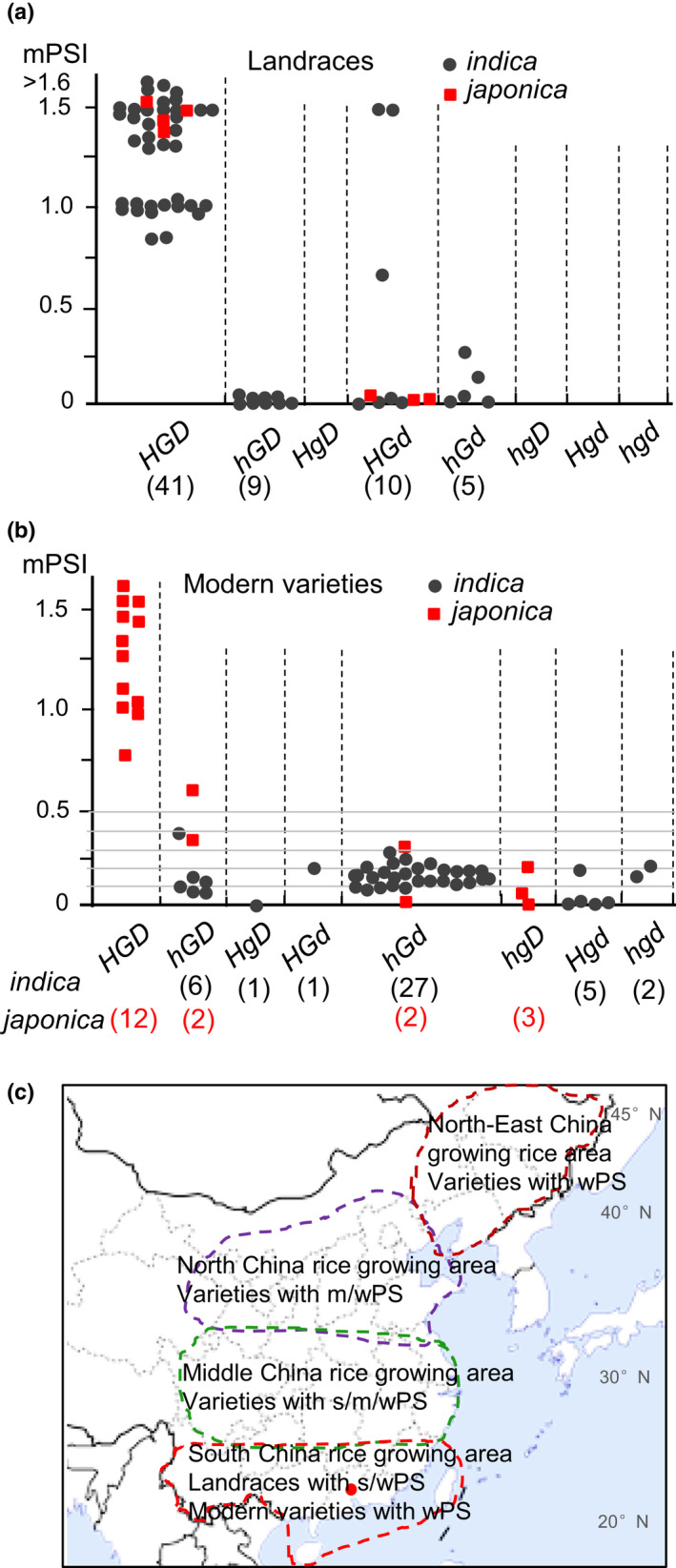Fig. 5.

Hd1, Ghd7 and DTH8 allele combinations confer variations in rice photoperiod sensitivity (PS) and contribute to geographical adaptation. (a, b) Modified PS index (mPSI) of landraces (a) and modern indica varieties (b), which are mainly distributed in South China, and modern japonica varieties (b) in Middle and North/Northeast China. The functional types of the genes (H, G, D) include various haplotypes that may have normal‐ or reduced‐function variations. The nonfunctional alleles (h, g, d) were derived from mutations causing frame‐shift. The mPSI values in (a) were measured with heading dates under artificial long‐day (ALD) and natural short‐day (NSD) conditions, and those in (b) were based on heading dates under ALD and artificial short‐day (ASD) conditions for japonica varieties and NLD and NSD conditions for indica varieties. (c) Adaptation of rice varieties to different day‐lengths and cropping systems in the main rice‐growing areas in China. In the South China (Guangzhou is indicated with a red dot) rice‐growing area where mainly indica varieties are cultivated, those landraces (carrying the HGD‐type) with strong photoperiod sensitivity (sPS) are planted in the late season (with SD conditions), and some landraces and most modern varieties (mainly containing the hGd‐type) having weak PS (wPS) are planted in the early season (with LD conditions) and the late season. In Middle China rice‐growing areas where both indica and japonica varieties are cultivated, indica varieties having wPS are planted in the early season (with LD conditions) and the late season (with SD conditions), or in the mid‐season (with SD conditions, heading in late August to early September). And japonica varieties having sPS or moderate PS (mPS) (mainly containing the HGD‐type or hGD‐type) are planted the in the mid‐season (with SD conditions, heading in early September). In North and Northeast China rice‐growing areas, only japonica varieties having wPS are planted in the mid‐season (with LD conditions, heading in early to mid‐August).
